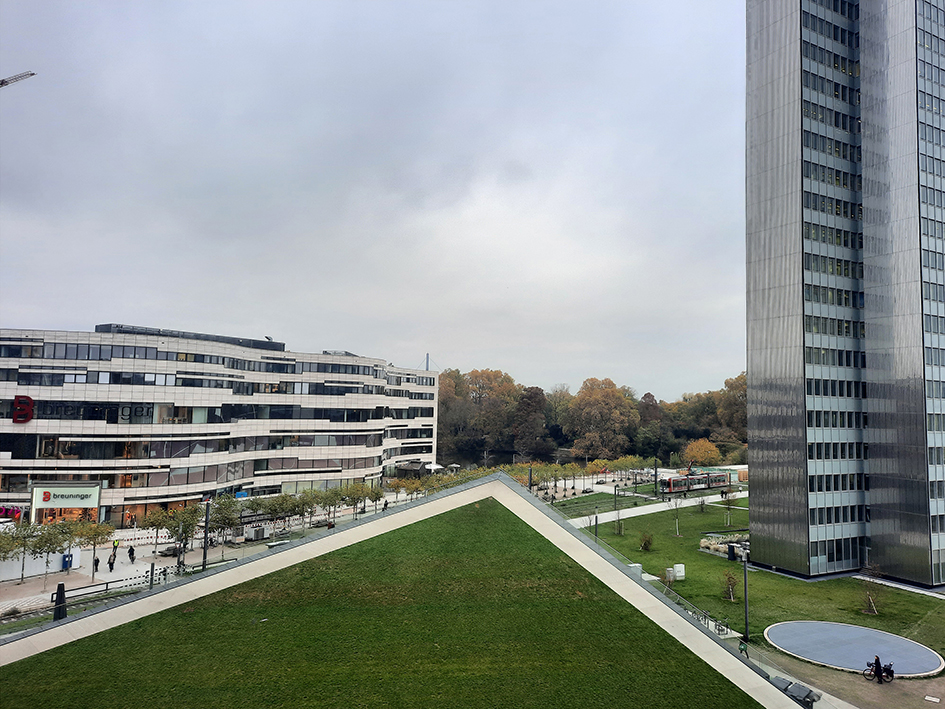EXPOSED GREEN – THE CITY’S STONY VALLEYS AND GREEN HILLS
Urban Walk Talks & Workshops Social/Urban Movements
The 20th century built using exposed concrete, the 21st century builds exposed greens. The Düsseldorf city centre houses Europe’s largest green façade: On the Kö-Bogen II areal, between Schadowstraße, Hofgarten, and Schauspielhaus, a business and office building is situated, and its sides and roof have been planted with roughly 30,000 hornbeams. Trimmed to a uniform height of 1,35 metres, they form a hedge of roughly 8 kilometres in length. This architecture has been hailed as the harbinger of a tendency in urban redevelopment that has been summed up as “from baroque city to Green City” by Klaus Englert, in his recently published “Architekturführer Düsseldorf (Düsseldorf Architectural Guide)”.
The Green City of the future is anything but devoid of automobiles – the traffic has been newly regulated, led through tunnels, and it has become invisible now. Instead, the mostly tubed and overbuild Düssel shall be exposed again at many sites, producing a blue-green ring of watercourses and park spaces that connect the city’s cultural hotspots in passing. In a recourse on the historic cityscape, the post-war building “eyesores”, occasionally framed as “Düsseldorf’s second destruction”, will be ironed out. And the Gustaf-Gründgens-Platz redesign transformed an inhospitable transit space into an attractive public square. The city, according to the promise, will be repaired and returned to its citizens – as a habitat that sustainably integrates and connects the needs of humans and nature, of culture and shopping, of climate and urbanism. How coherent are those narratives that complement urban development intervention and planning? While exposed concrete relinquishes the cover-up of the supporting construction, the exposed green does not only engulf the concrete masses used in building, but also the states of ownership and work that mark the emerging cityscape.
Actor and performer Hauke Heumann and photographer and artist Jan Lemitz developed an urban walk that confronts text and imagery with specific locales in urban space. The path to the city’s stony valleys and green hills makes the experience of historic projections perceptible and questions toward current urban development loud. What space is there for urban population in the face of construction processes oscillating between the imitation of nature and investment? And which forms of public life could unfold in this urbanscape?
credits
Re-Imagining Public Life receives support from the Medienkunstfonds through the Ministry for Culture and Science of the State of North Rhine-Westphalia.